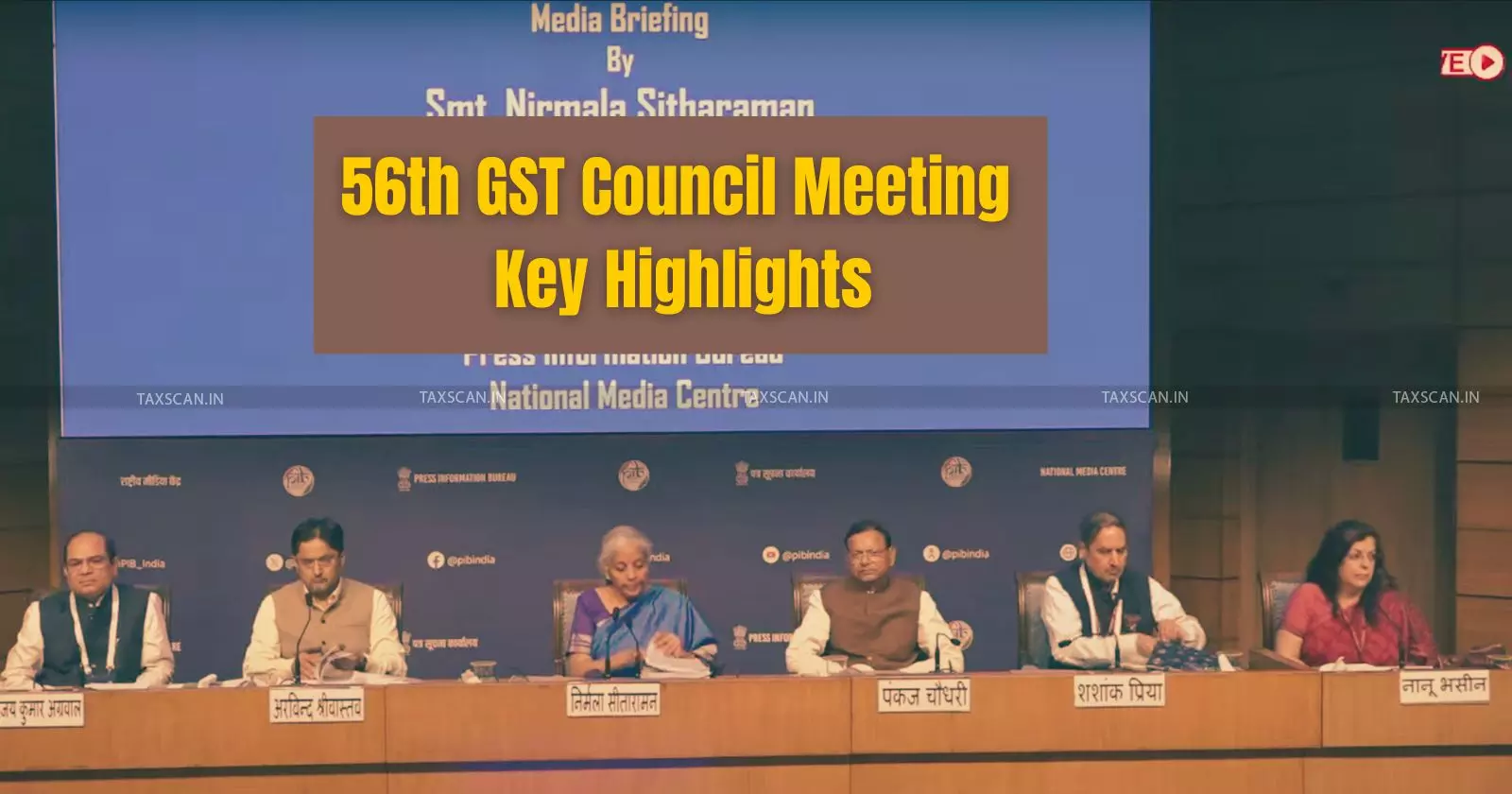56th GST Council Meeting: Key Highlights
The Council approved a move from the existing four-tier GST framework to a simplified two-rate structure.

The 56th meeting of the Goods and Services Tax (GST) Council, chaired by Union Finance and Corporate Affairs Minister Nirmala Sitharaman, concluded in the capital with sweeping decisions aimed at rationalising tax rates and easing compliance.
The reforms align with the “Next-Generation GST” vision announced by Prime Minister Narendra Modi on August 15, 2025, and seek to simplify the tax structure while directly benefitting citizens, small businesses, and key sectors of the economy.
Notably, all finance ministers attended the meeting, towards which the Finance Minister extended heartfelt gratitude.
Rate Rationalisations
The Council approved a move from the existing four-tier GST framework to a simplified two-rate structure. A standard rate of 18% and a merit rate of 5%. Select demerit goods will continue to attract 40%. This structural change marks one of the most significant reforms since GST’s inception in 2017.
Become PF & ESIC Pro: Basic to Advance Course - Enroll Today
For consumers, relief comes through sweeping reductions. GST on common household items such as soaps, shampoos, hair oil, bicycles, kitchenware, and tableware has been cut to 5%. Daily-use food items including UHT milk, paneer, and Indian breads like chapati, paratha, and parotta will now attract zero GST. Further, packaged snacks, noodles, chocolates, coffee, and ghee see rates slashed to 5%.
Healthcare and Insurance
In a landmark decision, all individual life and health insurance policies, including term, ULIPs, family floater, and senior citizen policies, are now exempt from GST. Additionally, 36 lifesaving drugs, including those for cancer and rare diseases, have been made GST-free. Other medicines and medical devices will attract 5% instead of higher slabs, significantly lowering healthcare costs.
Sectors that will benefit
The Council reduced GST on cement from 28% to 18% and cut rates on agricultural machinery, tractors, and renewable energy devices to 5%. Labour-intensive industries such as handicrafts, leather goods, and marble blocks also benefit from reduced rates. In the auto sector, small cars, motorcycles below 350cc, three-wheelers, buses, trucks, and ambulances all move to the 18% bracket, while a uniform 18% now applies to auto parts.
The textile sector sees correction of inverted duty structures, with GST on manmade fibre and yarn brought down to 5%. Fertilizer raw materials like sulphuric and nitric acid also shift to 5%, reducing input costs for farmers.
GSTAT Talks
The Council cleared operationalisation of the Goods and Services Tax Appellate Tribunal (GSTAT), which will begin accepting appeals by September-end and commence hearings by December 2025. The GSTAT’s Principal Bench will also act as the National Appellate Authority for Advance Rulings, strengthening dispute resolution under GST.
Revised GST rates on goods and services will be effective from September 22, 2025, except tobacco and pan masala products, which will continue at current rates until cess obligations are discharged.
With these reforms, the GST Council has signalled a decisive shift towards a simpler, citizen-friendly, and growth-oriented tax regime.
Support our journalism by subscribing to Taxscan premium. Follow us on Telegram for quick updates


